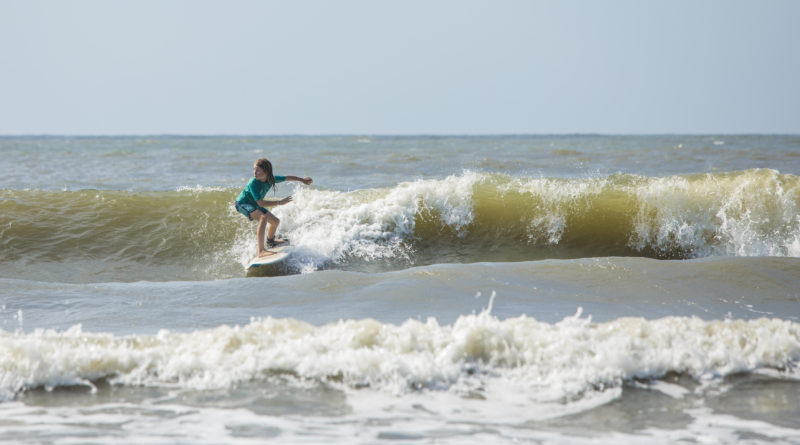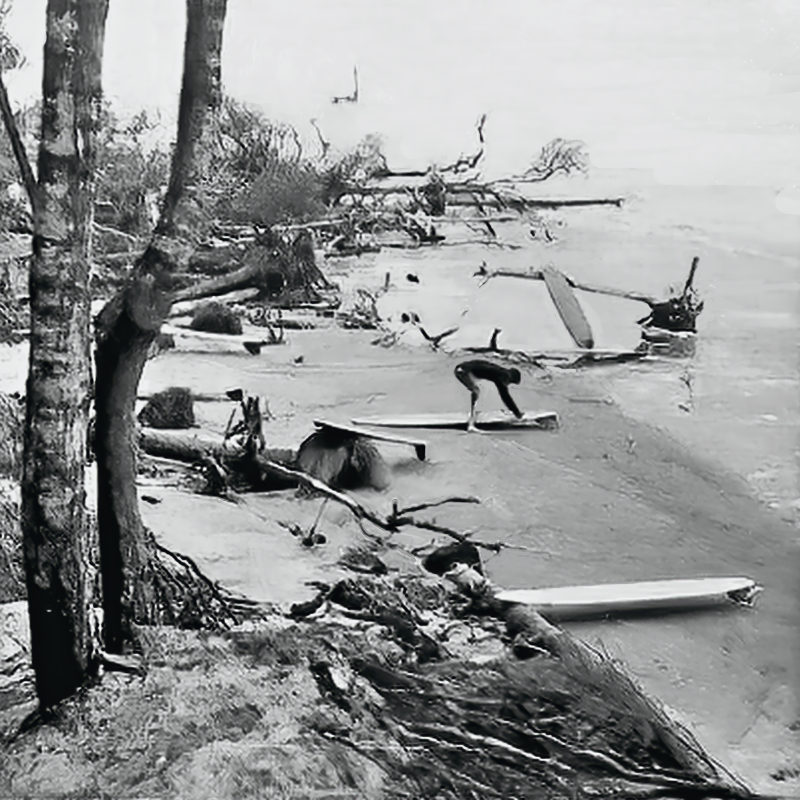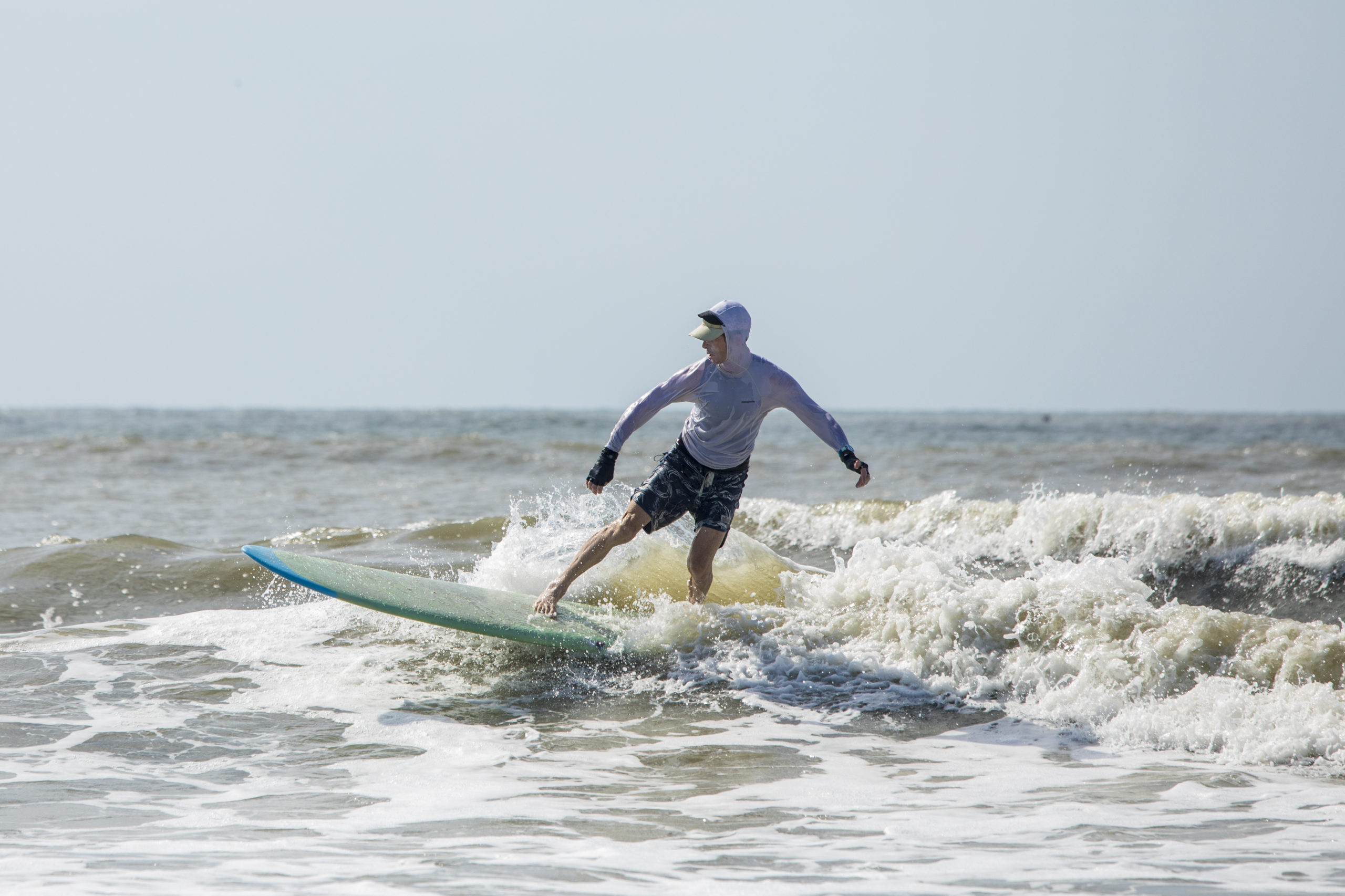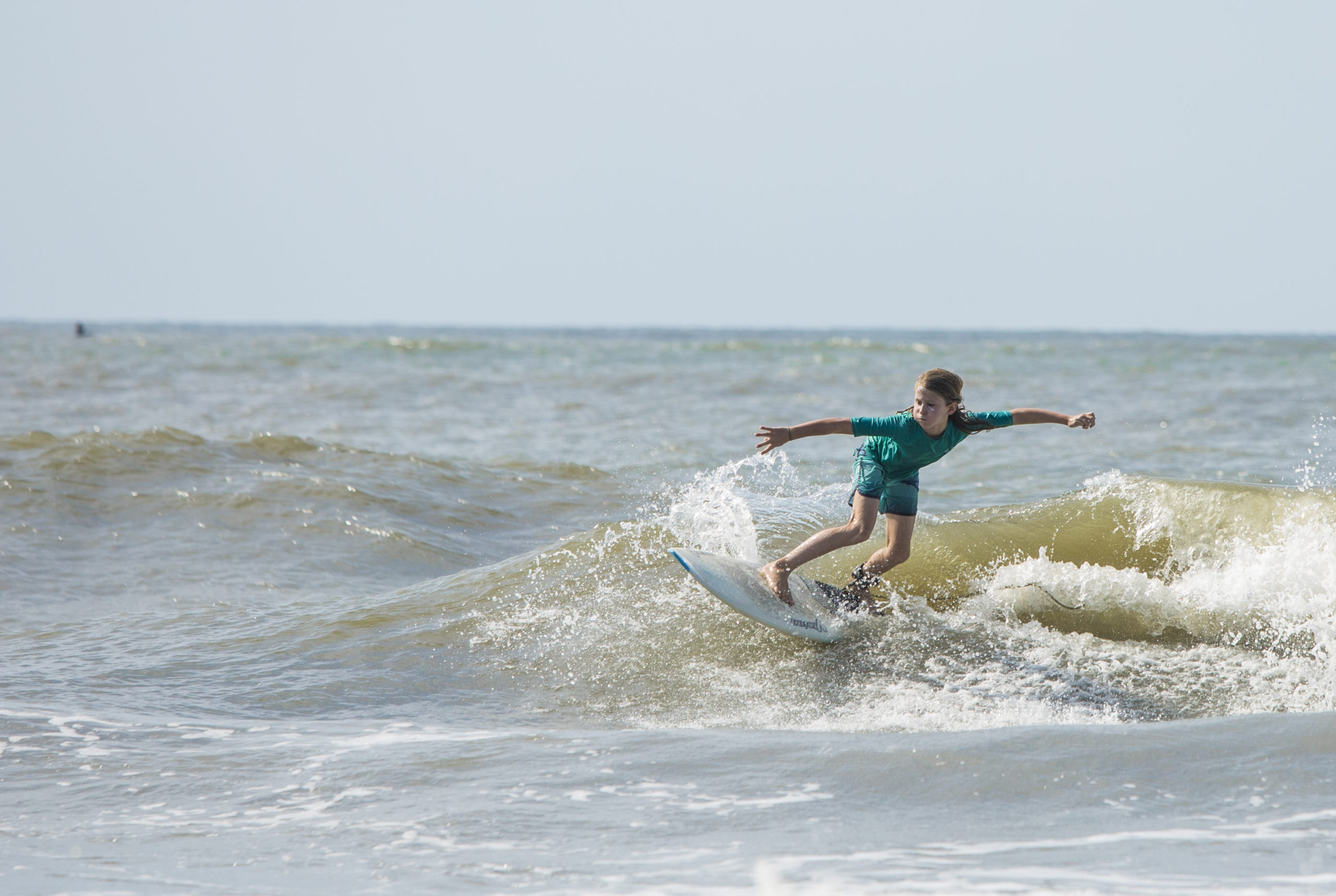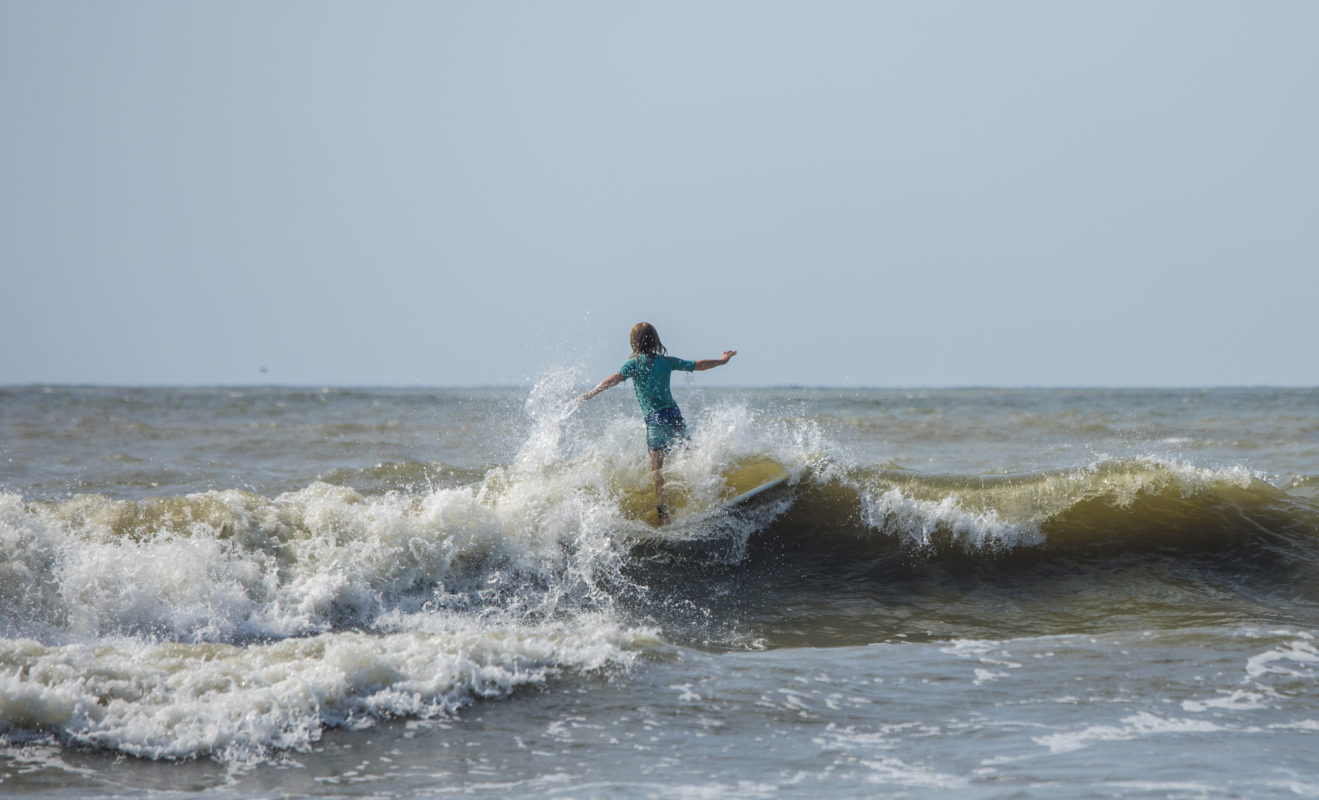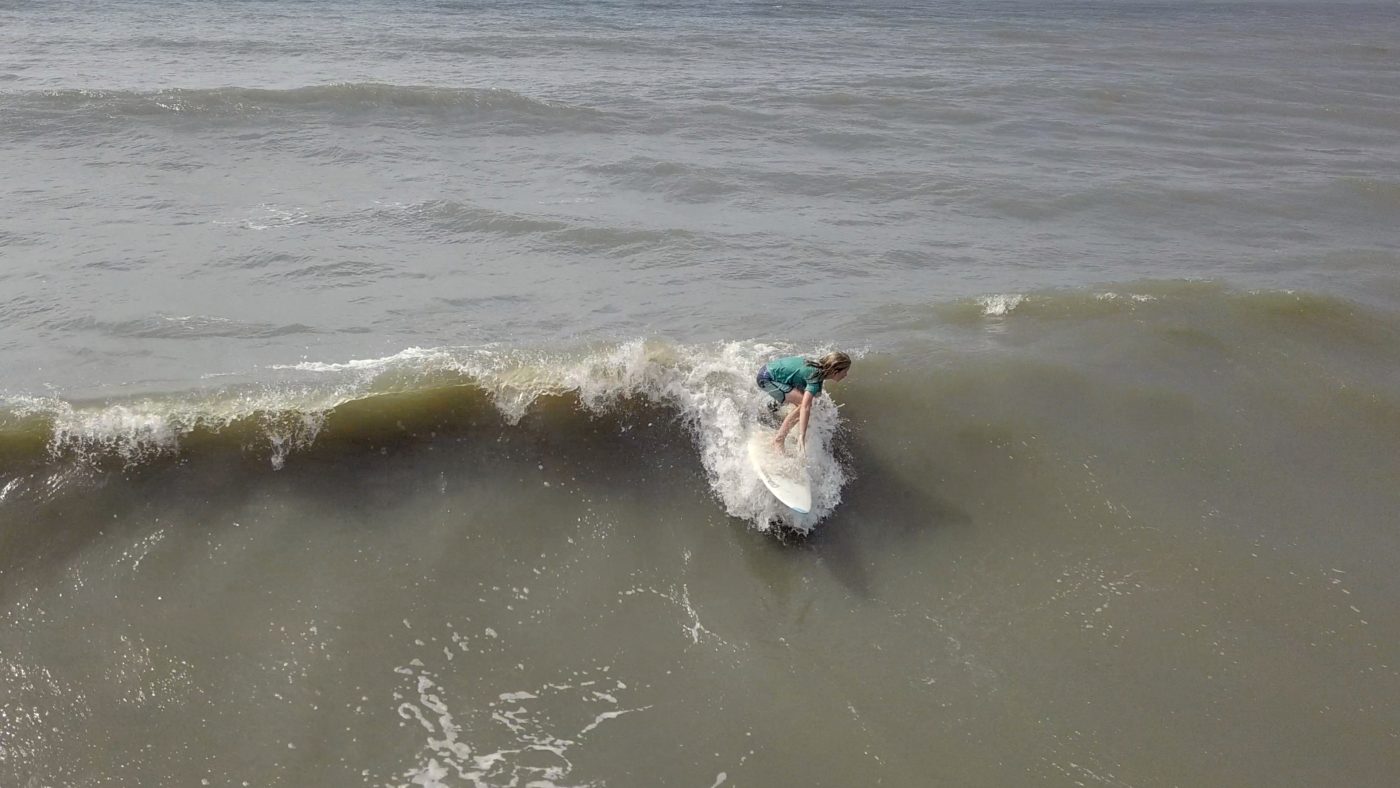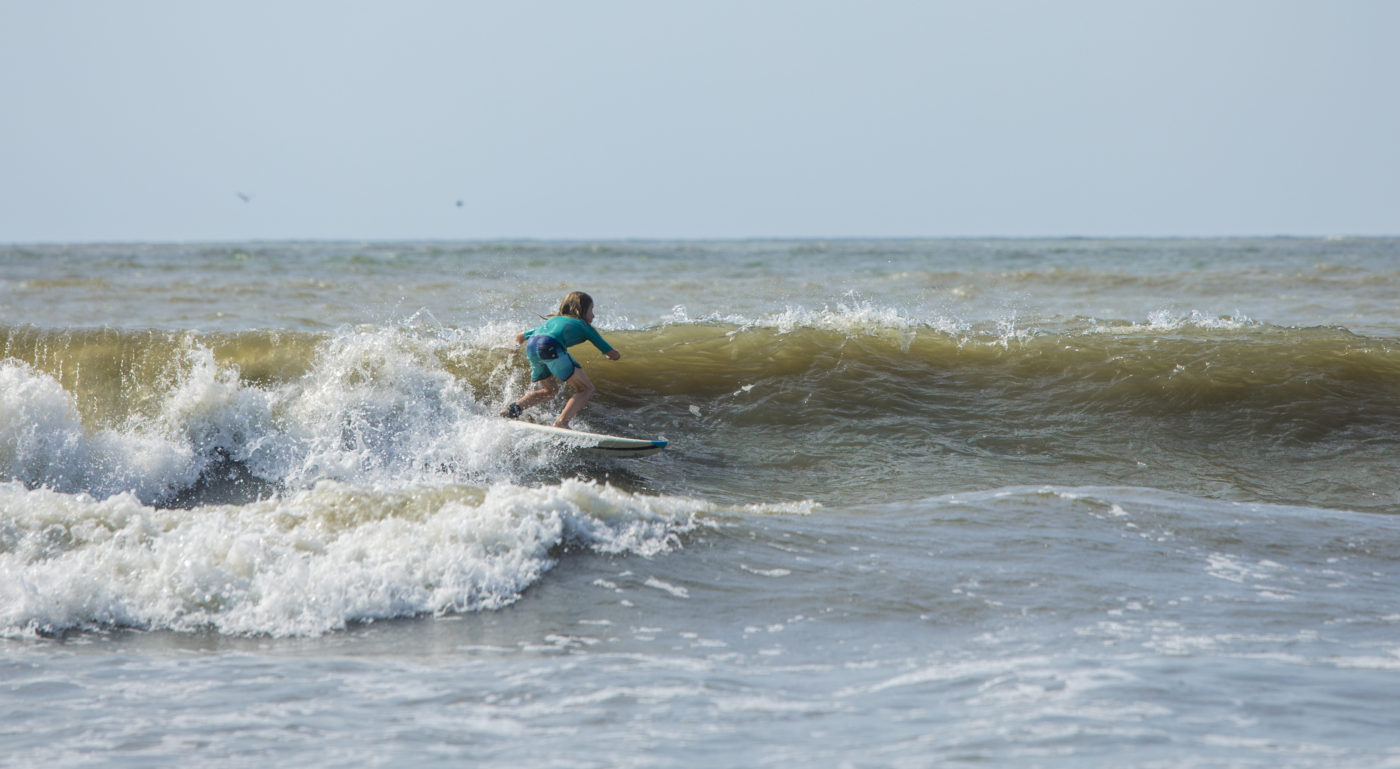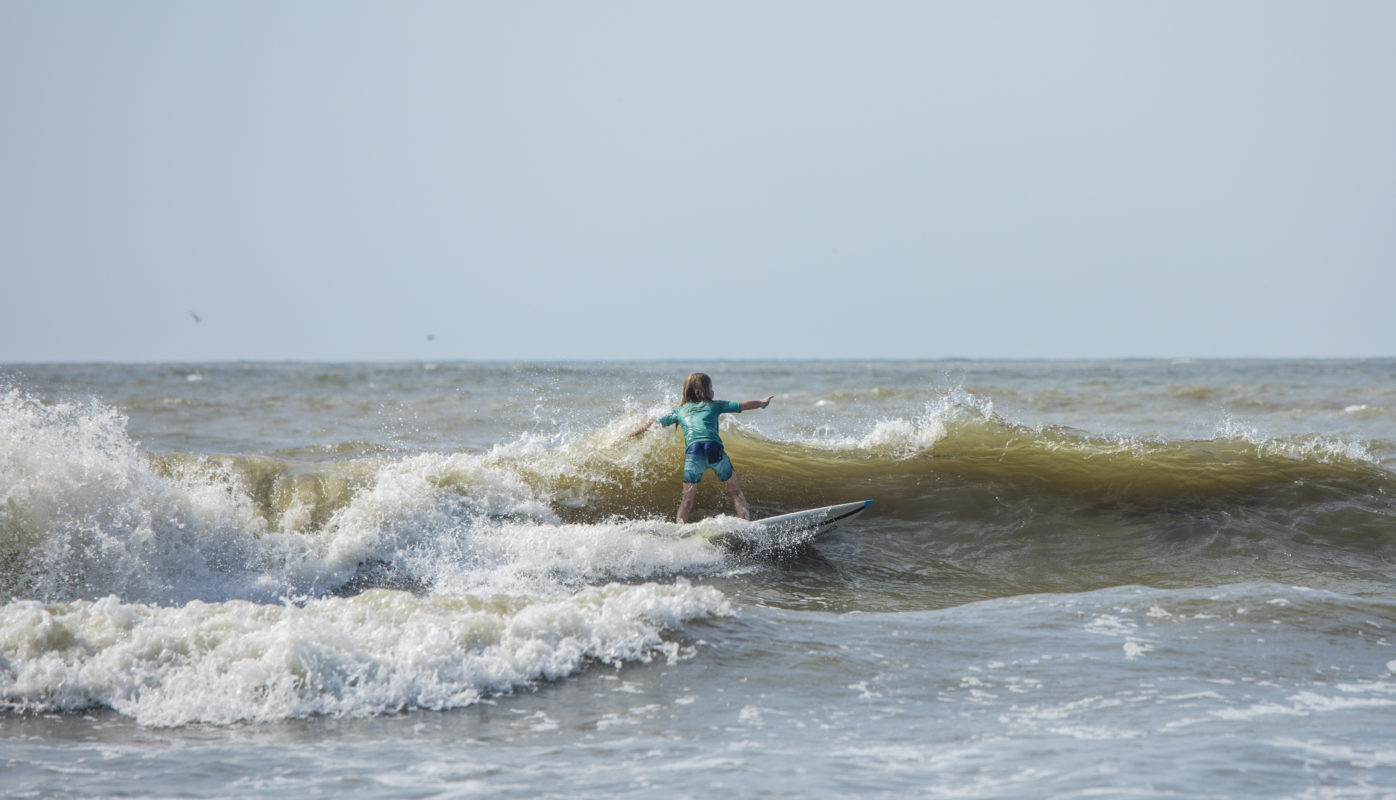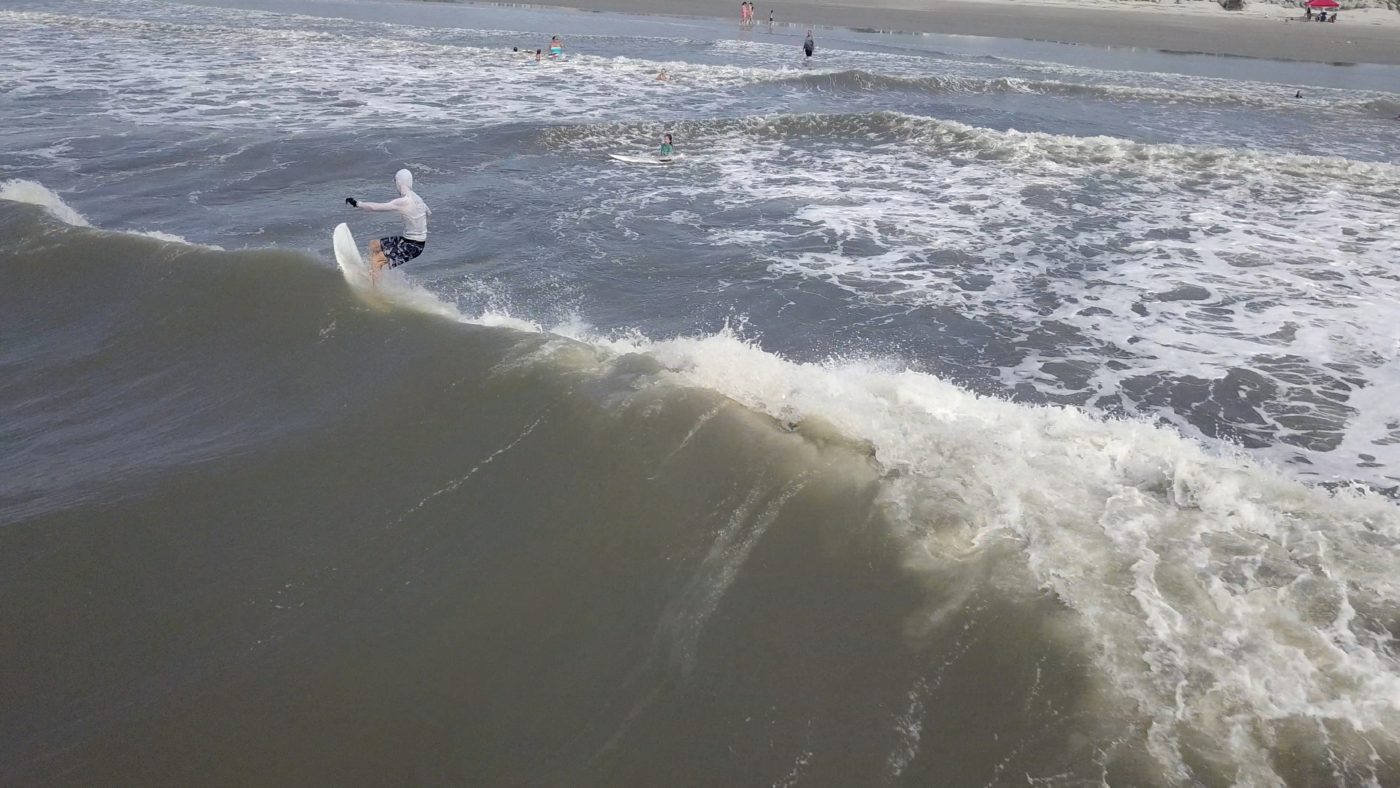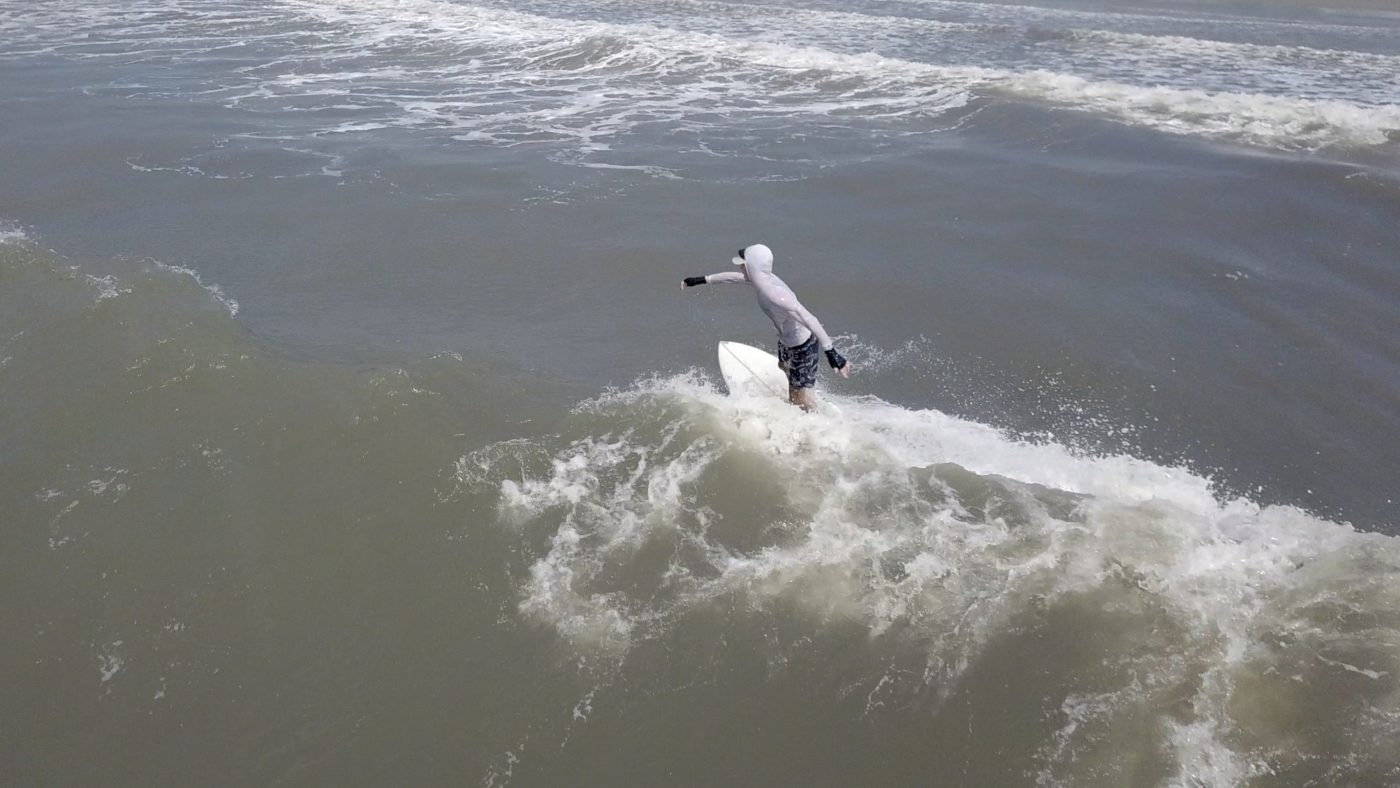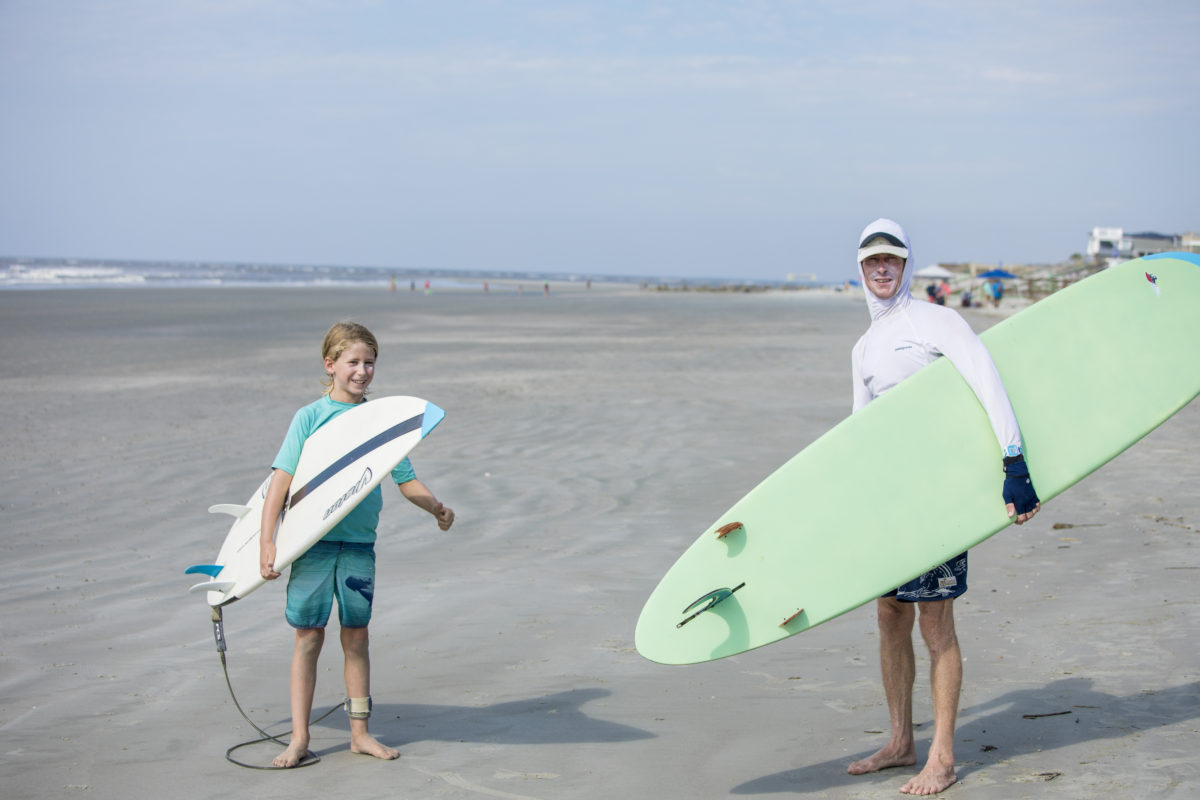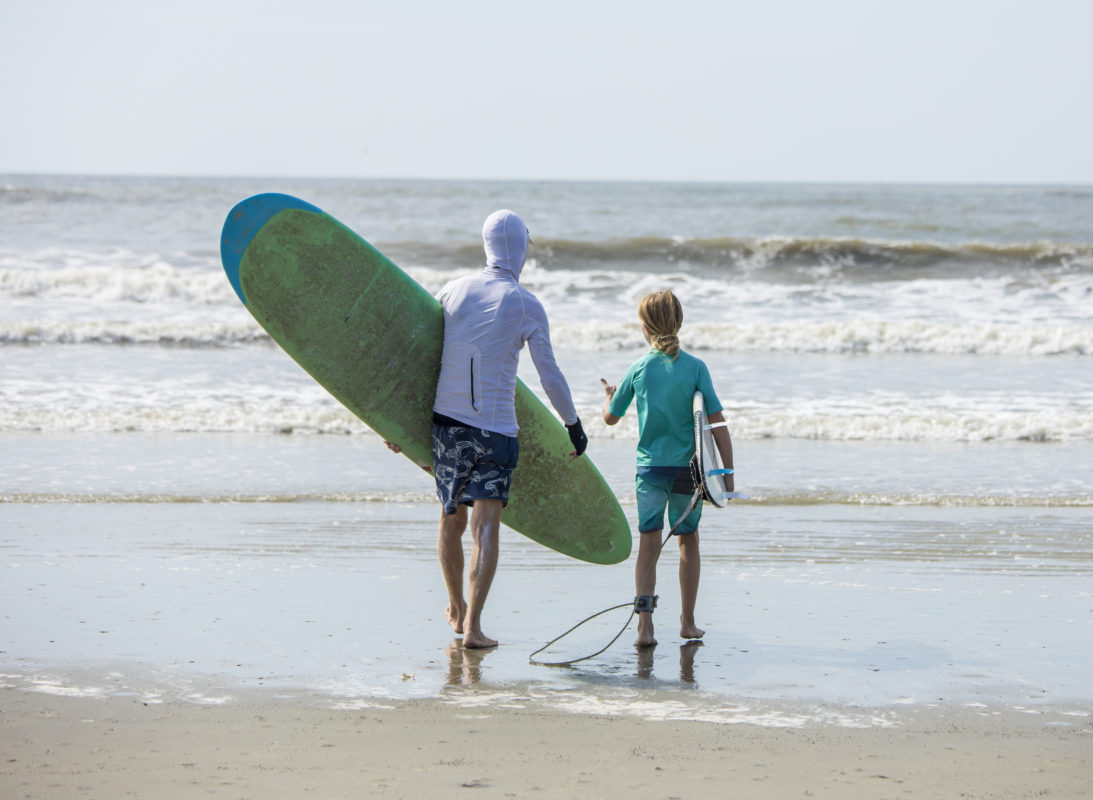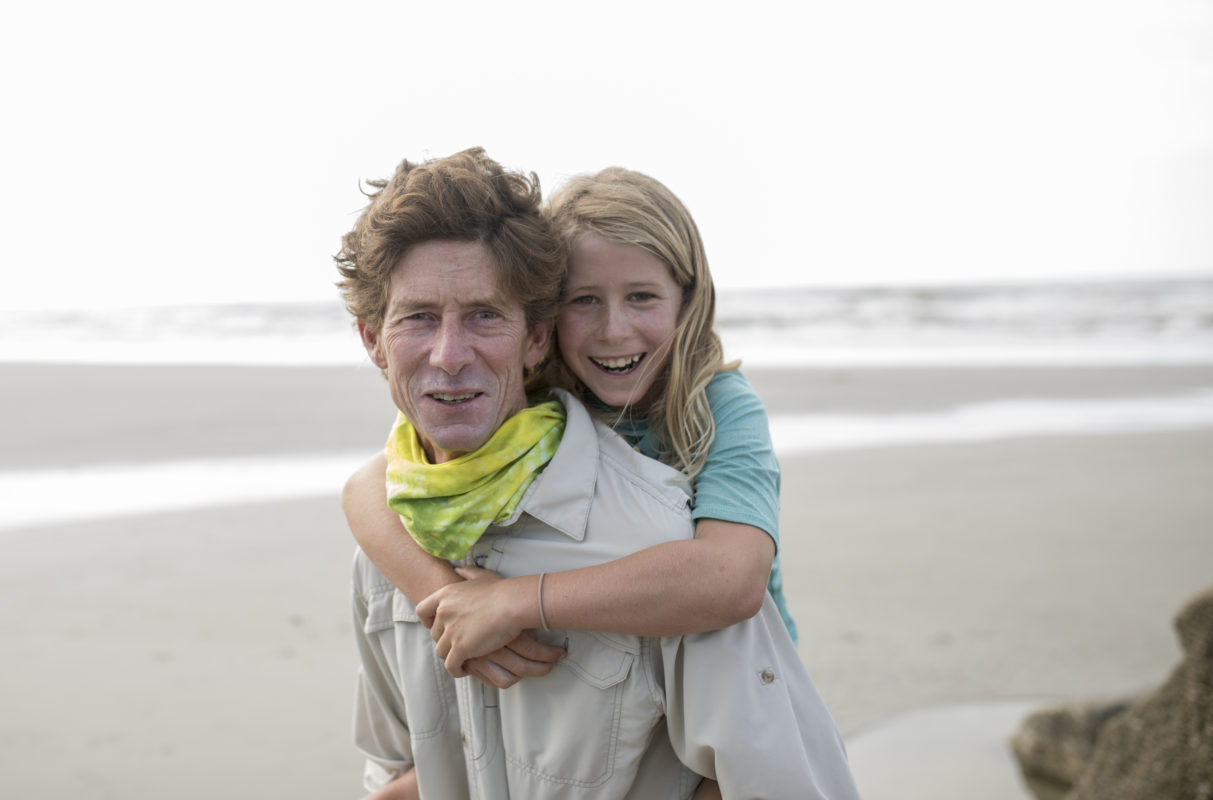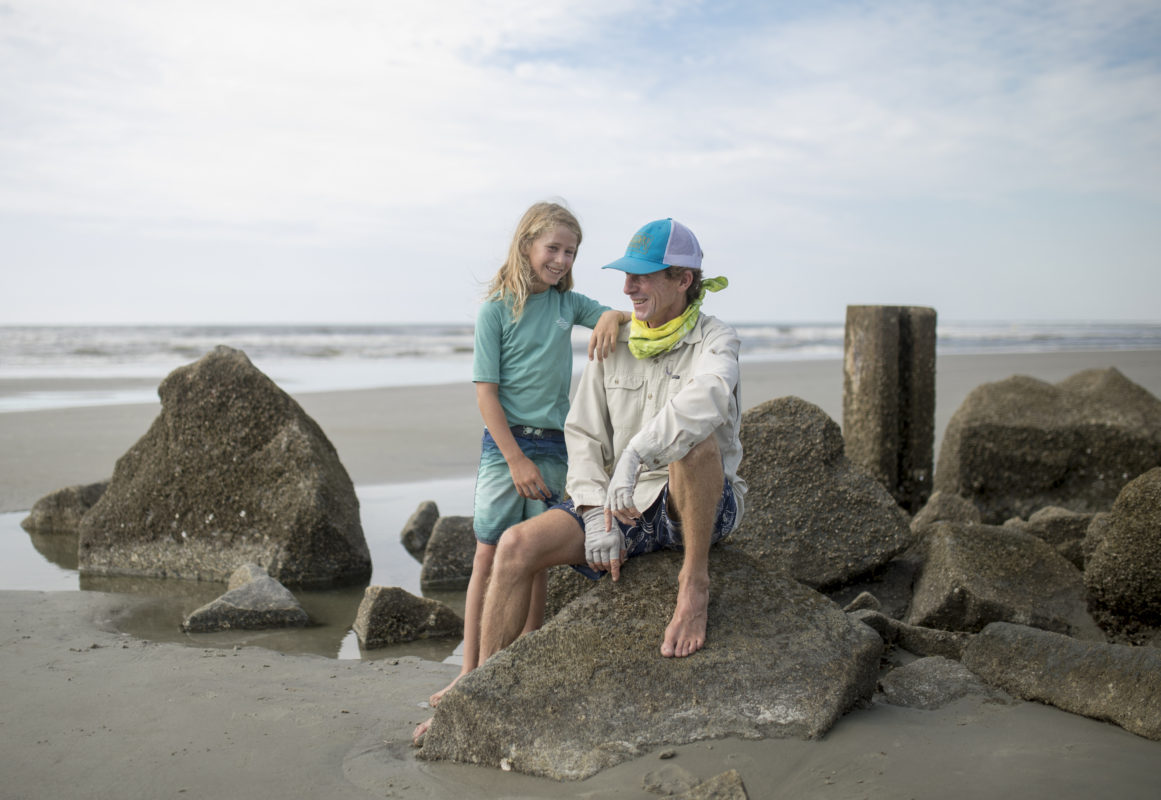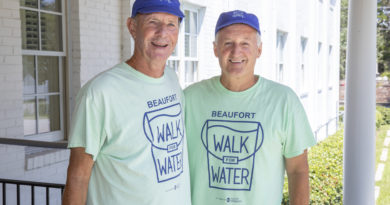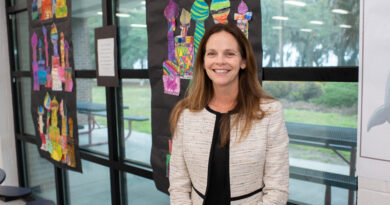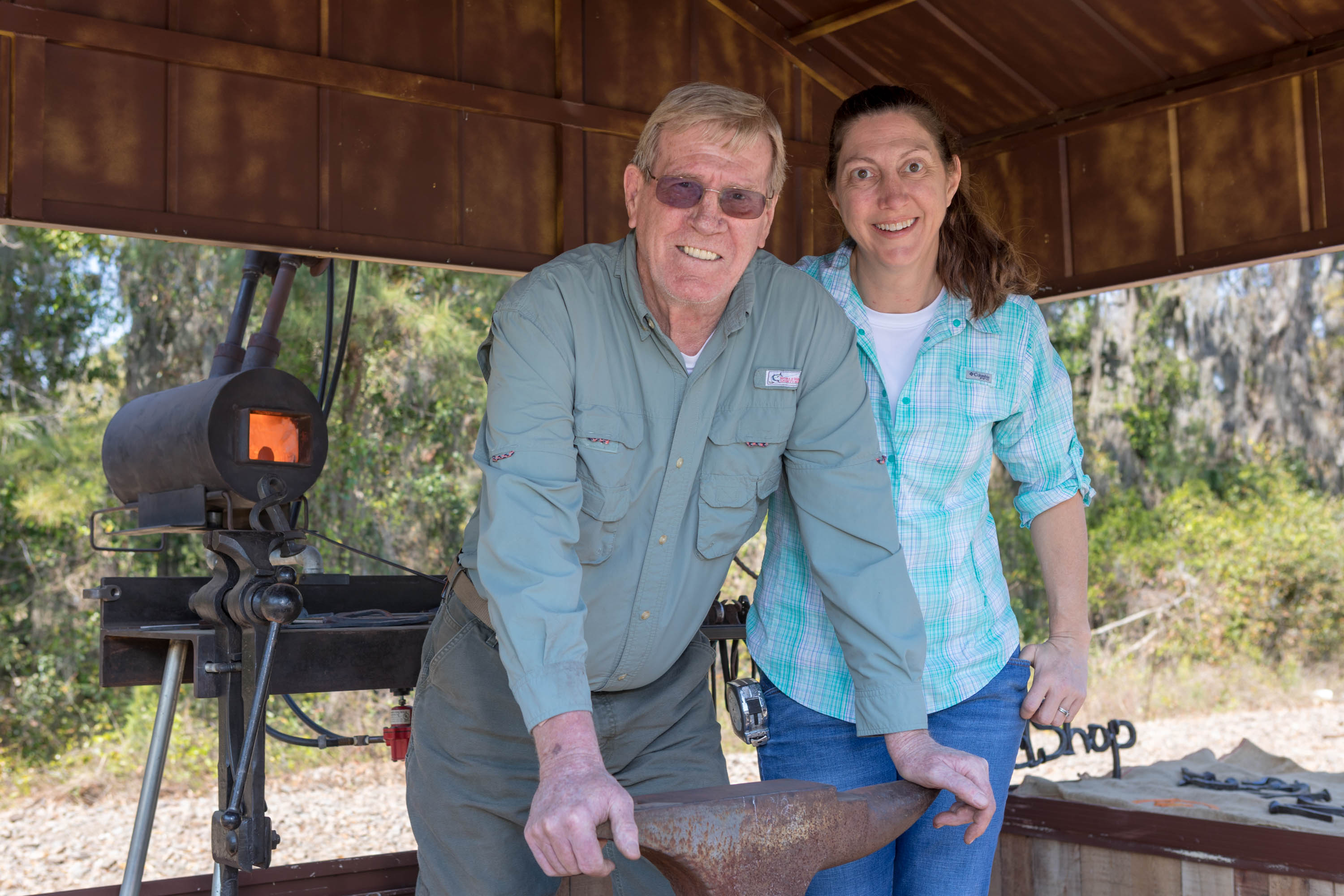Surfing at Hunting and Fripp Islands
Generation to Generation
story by KATE HAMILTON PARDEE photos by JOHN WOLLWERTH


Surfing Back In in The the Day
Barry Gooch, Richard “Murph the Surf” Neill, and Robert Gay, all born in Beaufort, not only experienced in the magic of growing up in the Lowcountry in the1960s but also became teen trailblazers in the sport of surfing. These friends were among the first group of kids who started to notice the swells at Hunting Island. Now in 2020, Barry is a retired chemist, Richard is a real estate agent, and Robert is a shrimper. Their tradition of wave riding endures at Hunting and Fripp islands.
Barry Gooch and friends began their surf journeys, sitting by the remnants of the Hunting Island bathhouse, watching Marines from California, surf. The debris pile formed a small point on the beach and broke the water for a surfable wave. Barry was intrigued and said, “I got the urge. You know … a little danger—something new—and a way to impress the girls on the beach.” So, the four guys picked up some surfboards and started to try. Through trial and error and a lot of practice, the self-taught surfers learned to ride the waves … learned a new sport.
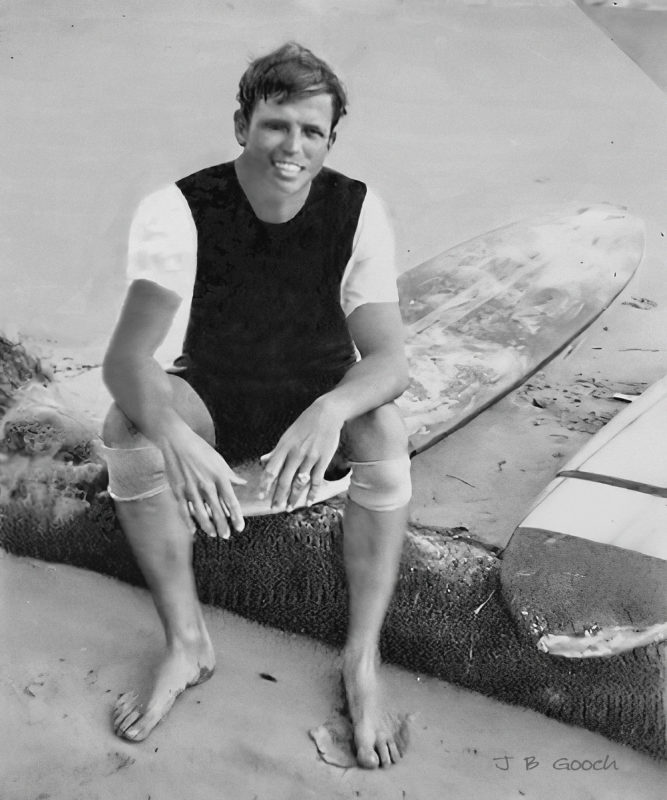
There were also days at Fripp Island where the waves were longer. The break was different than Hunting Island, depending on the direction of the swell and the wind. However, the real challenge was getting on the Island and past the gatekeeper on the private bridge. Barry said, “Later in 1965, I met Jack Kilgore, a new friend whose father was president of the Fripp Island Company. Then my guest pass was secured.”
Richard Neill ordered his first surfboard from the West Coast, purchased with money he made working at a local tomato packing plant. He said, “I loved watching surfing movies. The sport had become big in California but was just starting on the East Coast.”
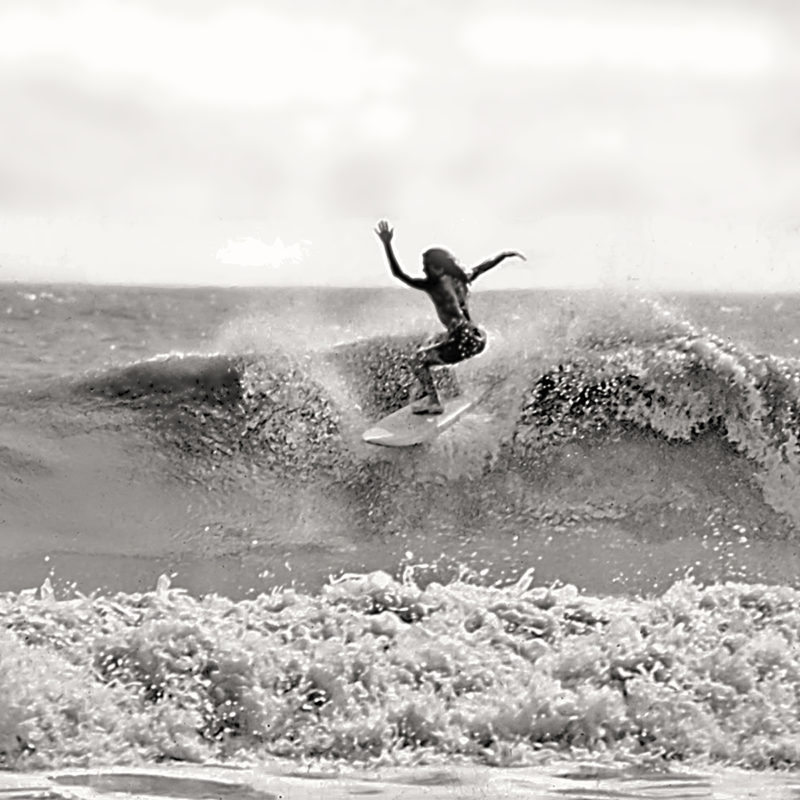
Robert Gay asked his father for help to buy a surfboard from a supplier of Gay’s Seafood in Charleston. Robert purchased a 9’ 6” board, because he said simply, “Back then, everything was a 9 foot 6 inch.” They couldn’t wait to share their new boards at the beach.
During this time, Gail Knight, born and raised in Beaufort, was one of the few women learning to surf at Hunting Island. Gail remembered one of her first moments out on the ocean: “I learned to fall or bail, by tucking and rolling out on the water by my surfer-musician friends, Fred Gauch and Ronnie Nobles.”They loved the sport and were members of the local band, Melody Makers, whose genre was surf music.
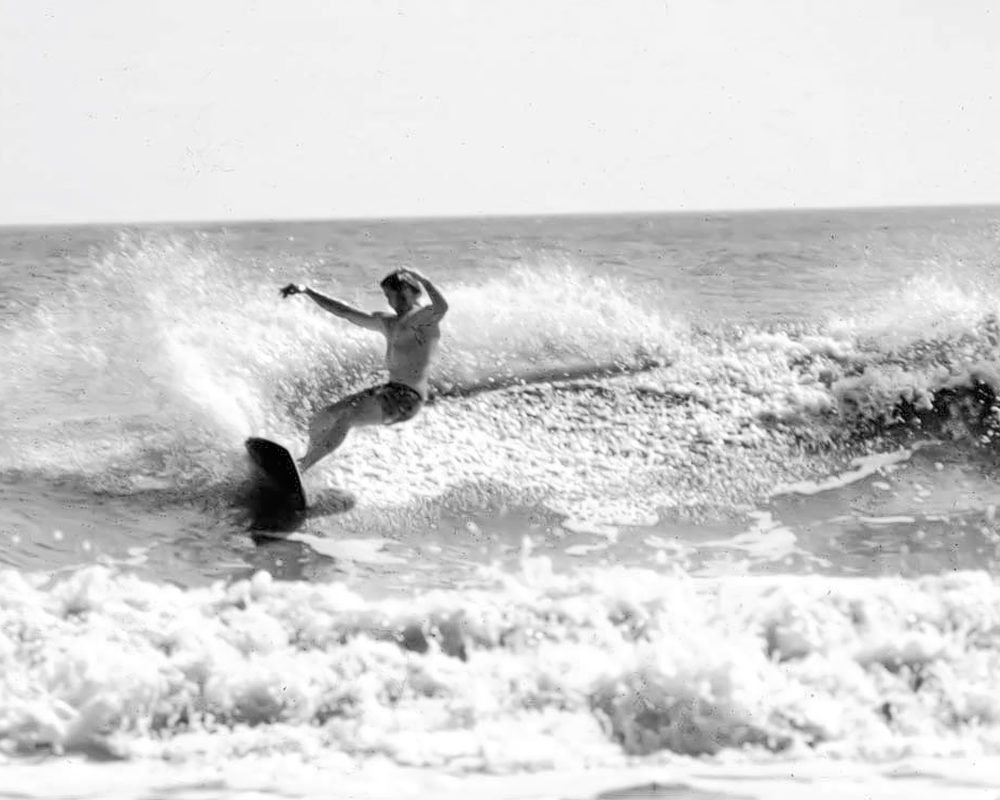
Gail said, “I found my Zen place out on the water, and the boys treated me like a kid sister.” She went on to surf competitively up and down the East Coast with other female surfers and chaperone Bette Marsh. Gail then moved to California, where she continued to surf and stayed when she met her husband, Thom.
Sharing Dewey Weber and Banzai surfboards, Barry Gooch and friends traveled the East Coast, chasing surf in Ronnie Noble’s 1956 Chevy station wagon called the “Blue Frame.” In high school, Robert opened Gay’s Surf Shop, which became the local place to hang out on St. Helena. Robert laughed and said, “At my shop, I sold the boards, wax, and tee shirts out of the 110-year-old house’s living room.” When his shop closed, Milton Kelly, an active surfer, opened a surf shop called Glory Days in the former cotton gin building in downtown Beaufort.
Barry said, “In the sixties, entertainment for the local teens was limited to spontaneous parties down deserted roads, barbecues, and oyster roasts.” Barry, a former president of the now-defunct Hunting Island Surfing Association said, “The membership held the first South Carolina surf contest at Hunting Island. We watched surf movies, like Endless Summer, in the community center on Carteret and held dances with live bands.”

I asked Barry what he would now tell a beginning, young surfer. He said, “Balance. Every good surfer should feel the energy of a wave to help them predict what the wave will do.”
Passing Down the Love of Surfing
The surf traditions don’t end there. Robert Gay’s son, Dalton, who learned from his father, is one of the next generations surfing at Hunting Island. His dad taught him at age 13 on a 7′ 2″ board from his father’s old shop.
Dalton has surfed in Costa Rica, Hawaii, and California. He said, “At Hunting Island, I surf with several local friends. I grew up with a Clark’s surfboard California Thruster with three fins and a 9′ 2″ McTavish for smaller, cleaner waves.” Dalton also said, “Surfing gives me the opportunity to be on the water that I love, and it’s a great way to relax away from everything else”—a common sentiment shared by many of these surfers.
Although the waves aren’t always great in the summer with what Dalton calls, “The Flats of July,” there are storm swells that come in August and days with an offshore west-northwest wind.” He says, “My friends and I drop everything, surf for six or seven hours, and then share some ice-cold beer and peanuts on the shore.”
Dalton offered some advice for new surfers: “Get out on the water, even if the conditions are not great to get comfortable and learn how to paddle on the board.” Robert joined in: “No paddle, no surfing. Lie on the board, and the speed will get you up and keep your knees bent. Starting to turn, you will get comfortable standing up.” Dalton continued, “Use your swimming skills and remember—seeing the dolphins are a good sign that the sharks aren’t nearby.”
 The Gordons: Father-Son Duo
The Gordons: Father-Son Duo
Scott Gordon and his son, Noah, are local surfers too. Scott, originally from Lake Chapin, SC, began surfing in Garden City, SC. His father realized his son loved the water so much he bought him his first board, a Fox Wave Weapon, for getting A’s in school. It was a match made in surf heaven, and now Scott is guiding his son in the sport.
Scott moved to Beaufort in 2001, got married, and started a family. His son, Noah, who is now ten, followed in his dad’s surf footsteps. They share the same “Goofy Foot” surfer’s stance, leading with your right foot on the board.
Scott, an art teacher for many years at Beaufort High School, said, “I believe surfing is truly another form of art expression too.” Together, they share many types of boards, and Scott said, “We have about ten boards at the house, and we surf on everything together.” These include Noah’s custom-shaped 5′ 3″ rounded tail from Buddha boards; and longboards, noseriders, and shortboards for Scott.
Noah became interested in surfboard riding after his mom enrolled him in a competitive swim class where he developed strength in his arms for future paddling. Noah’s father said, “In surfing, it is 80 percent paddling and 20 percent everything else.”
Noah, with a big smile, couldn’t wait to tell me about learning to surf at Hunting Island. He began with the tandem style of surfing with his dad sitting on the front of his board. He said, “I just kept going out, and, as time went on, I got more comfortable and eventually got my own board.”
Noah jumped up on a Spooner board in the living room, demonstrating moves to me while explaining, “I kept learning to adjust my feet to make turns, doubled up, and I love the drop.”
Hunting Island surfing is a bit more high performance with potential for barreling, and the waves at Fripp Island are better for longboards with slower breaking rides. What remains the same as the past is getting by the Fripp gatekeeper. Scott said, “Getting on the Island, it’s beg or barter. If you don’t know someone living there, you are out of luck, because it is a private island and should be respected.”
Scott, having surfed in Spain, Costa Rica, and at nearby Folly Beach, is an experienced surfer who also does some part-time instruction. He explained what boards might be best for young children or anyone new to the sport. “Soft boards are good because they don’t hurt beginners, and longboards are easier to catch waves. Price should be considered, but I suggest the Wavestorm from Costco (a good simple choice) and hire a licensed instructor or an experienced friend to teach you.”
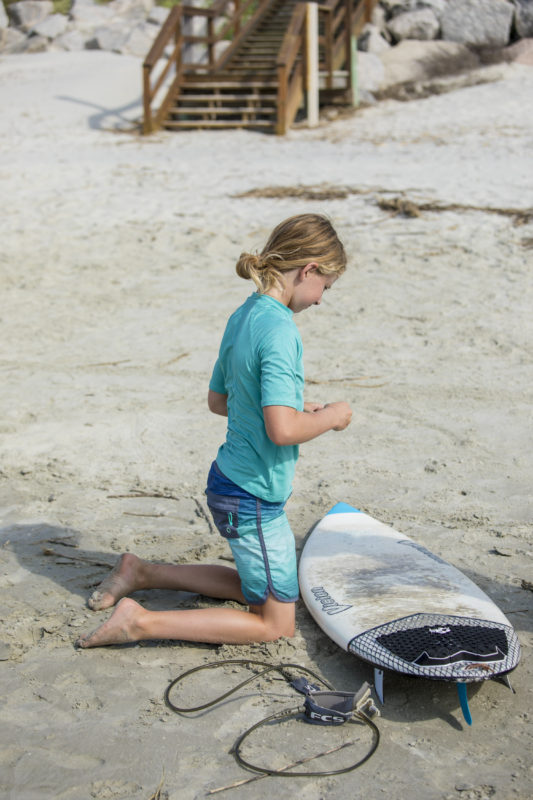
Scott is a fan of today’s surfers that are experienced or just beginning. Watching YouTube can be an excellent source for learning the sport. He said, “My son, Noah, watches John Florence, a professional surfer and world title holder, for inspiration.”
At age ten and enjoying his surfing lifestyle in Beaufort, Noah Gordon said, “I love school, science, and PE at the Riverview Charter School, but I want to be a pro surfer.” Petting his shepherd dog, Bear, he added, “If that doesn’t work out, I want to be a veterinarian.” Scheduled soon for Noah is a surf competition in Jacksonville, Florida.
I asked who inspires him, and Noah immediately said, “My dad.” He enjoys their family dinners after surf sessions, watching The Simpsons, and some good-spirited wave-rider trash talk for laughs.
The love of water and surfing at Hunting and Fripp islands spans generations. The tradition of wave riding continues with many of the currently experienced surfers passing on their knowledge and skills to the next age group to enjoy—a lasting and enduring bond for kindred souls.

